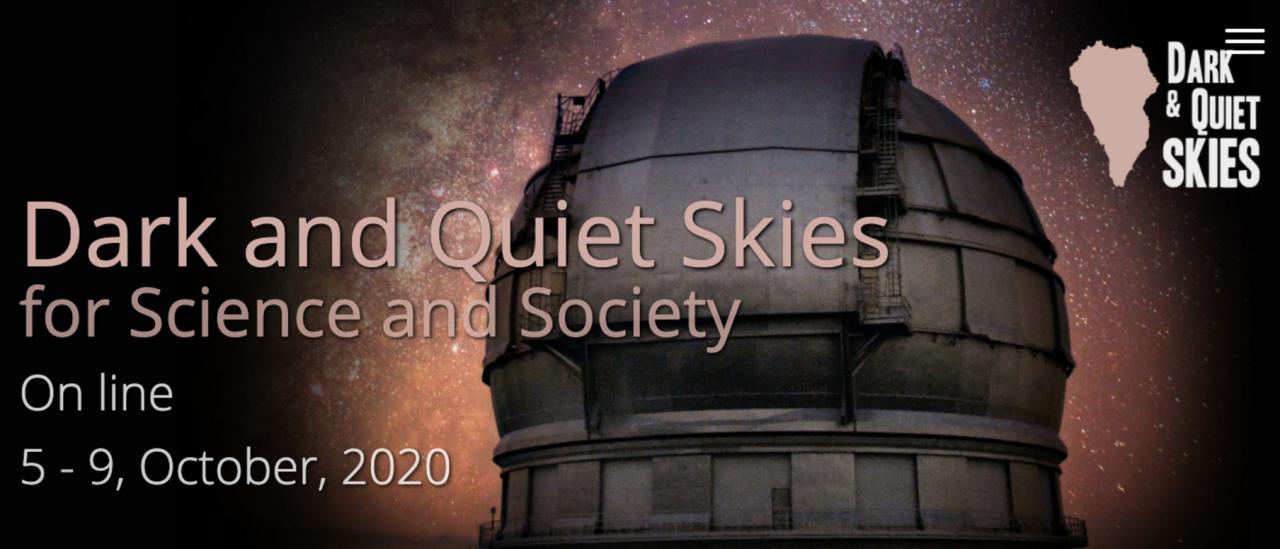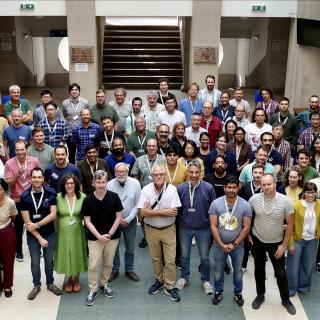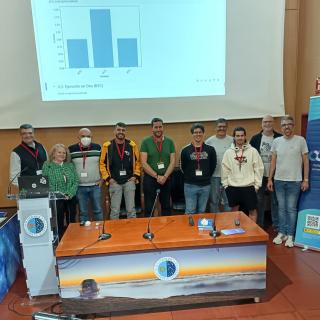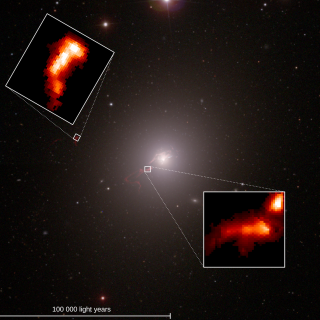Even though the conference planned by the Instituto de Astrofísica de Canarias (IAC) for celebration in La Palma has been postponed until mid-April 2021, the meeting is being held on-line from 5th to 9th October. In this workshop we will discuss a reference document for governments, city councils and companies so that they have a legal and technical basis to avoid the possible negative impact of the new technologies on the observation of the night sky and on biodiversity.
Link to the programme: http://research.iac.es/congreso/quietdarksky2020/pages/program.php
For thousands of years the silent, orderly beauty of the night sky has inspired humanity in all its intellectual and emotional expressions: poetry, philosophy, religion and science. Modern science is deeply indebted to the observation of astronomical phenomena to the point where many of its main advances, from the theory of universal gravitation to general relativity were stimulated and verified by careful observation of the sky.
Nowadays, technological progress, and specifically the artificial illumination of urban areas, has made it more and more difficult to observe the night sky in its pristine magnificence.
Furthermore, the remote sites chosen to house the most sophisticated astronomical observatories are starting to be endangered by light pollution, interference of radio signals, and climatic changes introduced artificially. A most recently an additional negative impact on night sky observation has emerged, from the optical interference of megaconstellations of artificial satellites in low earth orbit.
The United Nations Office for Outer Space Affairs (UNOOSA) together with the International Astronomical Union (IAU) are organizing this on-line workshop during which over a thousand experts from around the world will tackle, during the week, the problems faced by astronomical observations, to suggest practical solutions which UNOOSA will then approve. The participation of UNOOSA is particularly important because the aim of the forum is to reach all the governments in the world.
The Scientific Organizing Committee (SOC) of the conference has taken several months to create the document which will be discussed this week. The SOC comprises some 30 international experts from over 10 countries. The Committee is led by Professor Connie Walker (NOir Lab) and has a small working group comprising Nathalie Ricard (UN), Piero Benvenuti and José Miguel Rodriguez Espinosa (IAU) and Casiana Muñoz Tuñón (IAC). Each day one of the members of the core group of the SOC will present one invited speaker. Simonetta Di Pippo, the Director of UNOOSA, Pat McCarthy, Director of NOIRLab, Rafael Rebolo, Director of the IAC, Ewine van Dishoeck, President of the IAU, and Pedro Duque, the Spanish Minister of Science and Innovation.
The sessions each afternoon will centre on one of the five topics dealt with in the document, and are led and presented by each working group. Every day one chapter of the document will be presented so that the participants can make their comments. In the presentations the different aspects of the text will be analyzed, as will be the recommendations reached by the experts who have worked on them. The problems confronting radioastronomy, optical astronomy, dark skies, and night-time ecosystems will be dealt with. But also the satellite constellations, and possible solutions and technical challenges, using examples from regulations which have already been passed.
Access to the signals emitted by all the objects in the Universe is fundamental, not only to understand the Universe and for the general progress of Science, but the visibility of the starry sky is a basic human heritage which should be preserved with the greatest care and love, for future generations. Losing it will disconnect us for ever from the Cosmos and from Nature.



